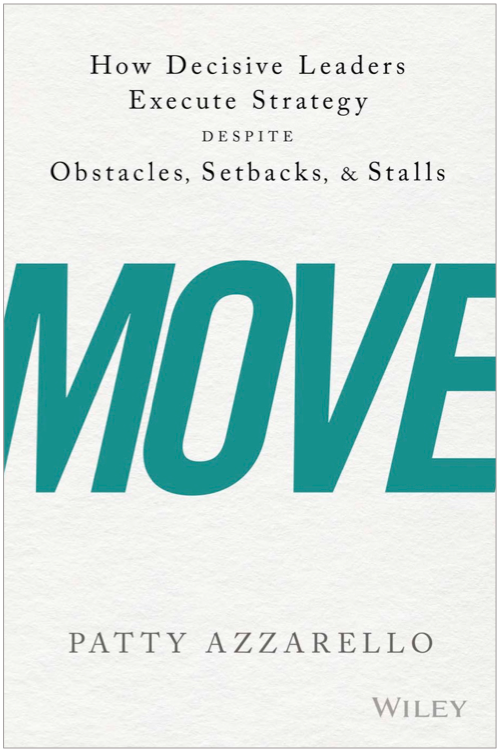The Chasm
Sometimes even when people agree, and like and respect each other, they can still find it frustrating to communicate — both can be really smart, capable people, but they just don’t get each other — they drive each other crazy.
The issue is that we all have our own preferred style of thinking and communicating.
When we are lucky enough to get a match with our boss, life is easy. When we end up as opposites, the interactions can be highly stressful and annoying, leaving both parties scratching their heads about why this is so difficult.
(If you are thinking Myers-Briggs, yes, that is a good way to explain this. But let me jump to specific point I want to make and I’ll put the Myers-Briggs stuff at the bottom for anyone who is interested.)
The Issue
These two types of people look at making progress very differently.
1. BIG PICTURE/GO
2. DATA/PROCESS/PLAN/STRUCTURE — then GO.
Because of that, what should be simple conversations often fall apart. Here are two examples of the problem.
Problem 1. BIG PICTURE/GO boss and DATA/PROCESS employee
(In Myers-Brigs, NP vs SJ)
Your boss says to you, “Make it so”.
You respond, OK, but here are the things we need to consider to make that happen. And we need to do this first, learn this, and fix this before we can complete that.
You feel like you are being smart and engaged, and in your own mind, this is what “full speed ahead” looks like — but what your boss hears is roadblocks, or excuses about why you can’t or won’t do it.
You start to feel your boss’s disapproval and frustration, but don’t get it. What you are saying is, Yes, I’ll do it! And here’s how. In your mind, you are showing your boss that you are capable and ready to take this on.
But what your boss’s reaction seems to be, Why are you arguing with me?
The more you talk about what it will take and how you will do it, the more frustrated your boss gets.
Solution: Stop explaining!
When your BIG PICTURE/GO boss says, “Make it so”, what you need to say is “Will Do!” and leave the room.
It’s import and to give him the, “YES and GO” feedback in the moment.
Any more information, explaining how it will work, or noting problems to solve at this point will not only NOT add value, it will aggravate him.
Your BIG PICTURE/GO boss is looking for you to join him on the “GO” wagon. Just say, I’ve got it. I’ll report back later. Then GO.
Once you are off on your own you can say to yourself, oh crap, this is difficult, we can’t just jump to that outcome, this might not work, we need to do all this other stuff first… At this time you can study the situation, get inputs, break the task down into steps, start solving problems, etc.
Stay in the Big Picture
Then when you go back to your boss, your BIG message is, I am making progress.
If you need some help, resist the urge to explain or show your work, and keep it a big picture request.
…I have broken this down into 4 areas. All are moving forward but one. I need you to make a decision on this one and then I can continue. Here are two choices.
Keep all of your sequence and process to yourself and reveal only what is truly required, to your boss.
You don’t need to show how capable you are by exposing the machinery. The good news is that your boss trusts you and doesn’t need as much data and sequence as you need.
Score points on your boss’s, terms not yours.
Problem 2. BIG PICTURE/GO employee – DATA/PROCESS Boss
What about the opposite, where you are the big picture/go person and your boss is the detailed, micro-managing, data/process person.
What happens here, is you say to your boss, I’ve got it, but then your boss wants to see all the spreadsheets and project plans. He is thinking about way more detail than you are, even though you are the one doing the work.
He expresses concern that you don’t have enough data. You feel like he doesn’t trust you.
You just want to get on with it and your boss is slowing you down.You are miserable going on data fetching exercises which are not helping you move forward.
Solution: Switch to productive detail
You won’t get away with not giving detail.
You will need to satisfy your boss’s need for detai. The trick is to satisfy this need for data and detail but to change the conversation so it doesn’t slow you down.
Here’s an approach I have used.
Always have a flow chart with you that shows what you are doing between now and delivering the outcome. Go into the conversation with at least a block diagram of your process. This can deflect a lot of detailed questions.
Focus his detail energy on getting more data about the outcomes, away from the process and activity:
…Are these measures OK? Are there other outcomes I have missed? Can you think of other things we need to test or measure to make sure this delivers what we need?
Bridging the Communication Gap
If you are having these kinds of dis-connects with your boss or employee, stop and think about how you are both reacting. Chances are, it’s a big-picture/go, data/process disconnect.
Once you are aware of if, you can start changing how you interact. This will lead to a much more productive and pleasant relationship, and you’ll get better business outcomes.
If you share this awareness and discuss your different styles, you might even find yourselves joking about it.
The worst outcome is to just stay frustrated, when you actually are in agreement and just having trouble communicating.
Myers-Briggs Information
If you are interested you can take a Myers-Briggs personality test here:
Here is the short-hand about what the assessment tells you.
On each of 4 scales there are two end-points and a range in between. Most people are more toward one end than the other on each scale, but seldom wholly one or the other.
Below are not the official definitions. These are my practical take-aways that I use as a rule of thumb when I interact with people. (By the way, I am an INTJ.)
1. I or E
How you learn and process information about the world: In your own head (I) or by talking things out with others (E)
Also, how you get and renew energy: By being alone (I), from interacting others (E)
2. N or S
How you form your picture of the world from that information: Big picture, top down (N), or bottoms up, built from lots of detail (S)
3. T or F
How do you decide what to do about it: Logic/thinking (T) or Caring/Feeling (F)
4. J or P
How you take action on it: Sequence and process (J), or Go now and learn as you go (P)
What do you think?
Join the conversation about this on my facebook page.
Was this useful?
If you found this article useful, please help me share it with others and encourage them to subscribe to this Blog for free.
Patty Azzarello is an executive, best-selling author, speaker and CEO/Business Advisor. She became the youngest general manager at HP at the age of 33, ran a billion dollar software business at 35 and became a CEO for the first time at 38 (all without turning into a self-centered, miserable jerk)
You can find Patty at www.AzzarelloGroup.com, follow her on twitter or facebook.
And make sure to read her book
RISE…3 Practical Steps for Advancing Your Career, Standing Out as a Leader, AND Liking Your Life.
The answers to your career struggles and your next promotion are in it!





